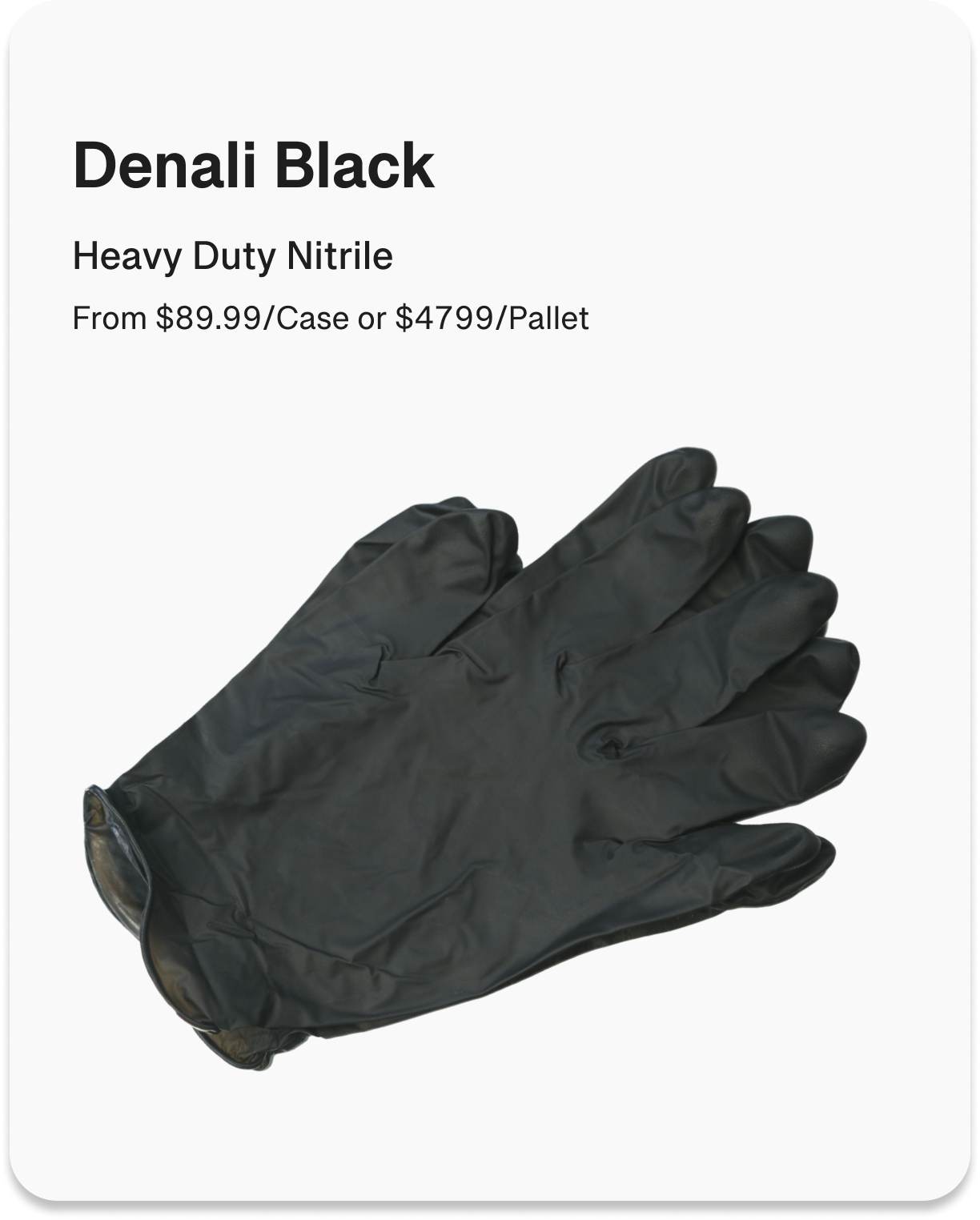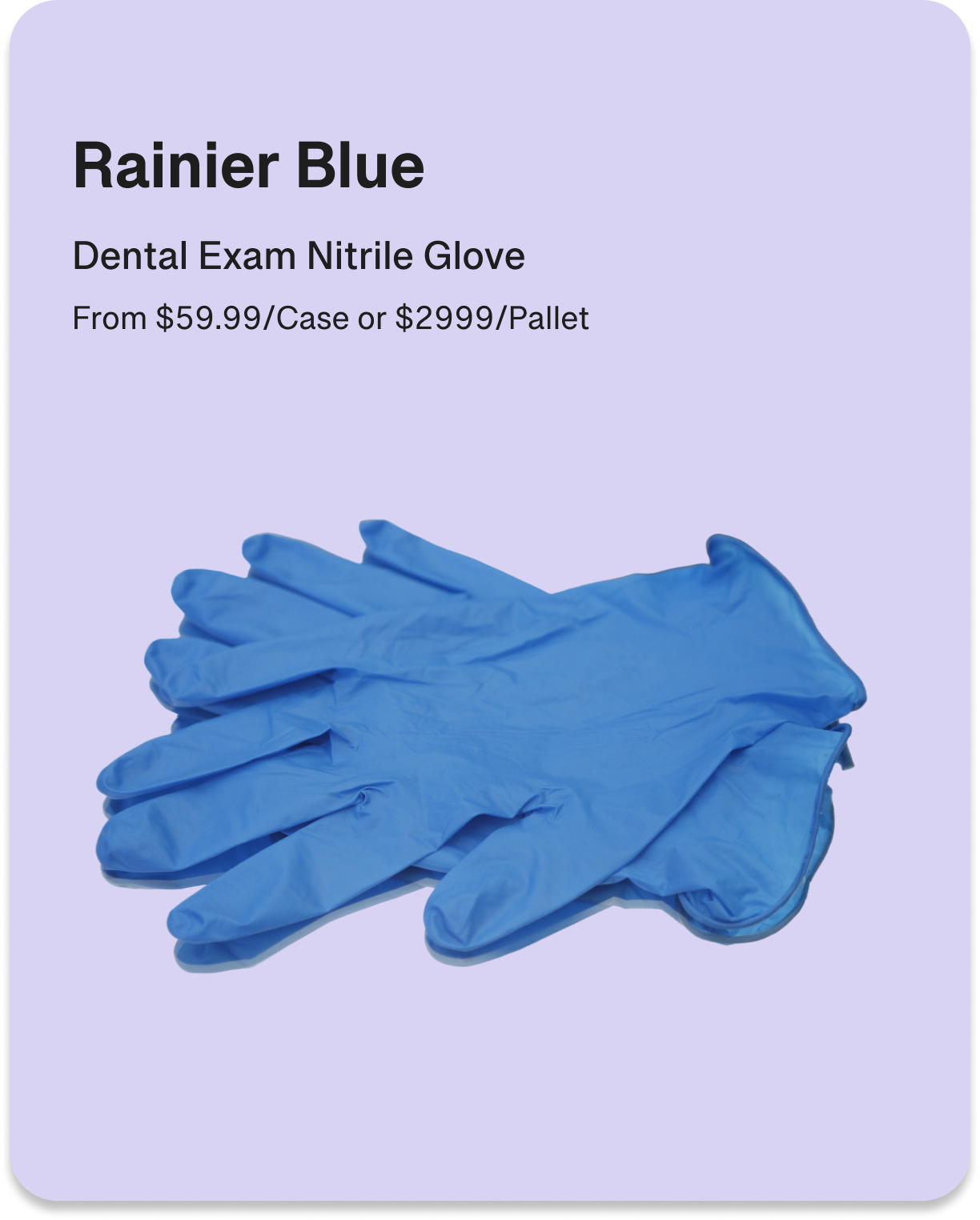Article: Choosing the Right Disposable Gloves: Nitrile vs. Latex vs. Vinyl

Choosing the Right Disposable Gloves: Nitrile vs. Latex vs. Vinyl
In industries like healthcare, food service, and manufacturing, choosing the right disposable gloves is essential for safety, comfort, and task suitability. With nitrile, latex, and vinyl being the most common glove types, it’s important to understand their differences, including what each material is made of, whether they contain latex, and how they compare for various uses. Below, we break down these key differences, help clarify the meaning of each type, and guide you on choosing the best glove for specific needs.
What Are Nitrile Gloves Made Of?
Nitrile gloves are made from a synthetic rubber called acrylonitrile butadiene, which provides excellent flexibility, durability, and chemical resistance. They are designed to be latex-free, which makes them a safe alternative for individuals with latex allergies. Nitrile gloves are popular for high-stress tasks, as they offer high puncture resistance and withstand exposure to many chemicals. Because of these characteristics, nitrile gloves are widely used in medical, laboratory, and industrial settings.
- Benefits of Nitrile Gloves
- Latex-Free: Safe for those with latex sensitivities.
- Durable and Puncture-Resistant: Ideal for high-risk environments.
- Chemical Resistance: Offers protection against a variety of chemicals, which is critical in labs and healthcare.
Do Nitrile Gloves Contain Latex?
Nitrile gloves do not contain latex. They are manufactured from synthetic materials, making them a popular choice for people who are allergic to latex. Latex allergies can range from mild skin irritation to severe anaphylactic reactions, so it’s essential to use latex-free gloves in environments where people might have sensitivities, such as hospitals and food service.
- Why Choose Latex-Free Gloves
- Allergy Prevention: Latex allergies are relatively common, so opting for nitrile gloves helps prevent reactions among users and those who come into contact with the gloves.
- Wider Application: Since nitrile gloves are allergy-friendly, they’re safe for use across healthcare, food handling, and beauty industries where many people may come into contact with the gloves.
Nitrile vs. Vinyl Gloves: Which is Better?

Vinyl gloves are another latex-free option but differ significantly from nitrile in terms of durability and flexibility. Made from polyvinyl chloride (PVC), vinyl gloves are less expensive and offer basic barrier protection. However, they lack the flexibility, durability, and puncture resistance of nitrile gloves. Because of these limitations, vinyl gloves are best suited for low-risk tasks, such as food preparation, where exposure to hazardous materials is minimal.
- When to Use Vinyl Gloves:
- Cost-Effective for Light Tasks: Vinyl gloves are budget-friendly, making them suitable for tasks like food service and cleaning.
- Latex-Free: Safe for those with latex allergies, although they offer less durability than nitrile.
Nitrile vs. Latex Gloves: Strength and Sensitivity

Latex gloves are made from natural rubber, which offers a high level of elasticity, comfort, and touch sensitivity. This makes them ideal for precision tasks where tactile feedback is crucial, such as medical examinations and surgical procedures. However, the natural proteins in latex can trigger allergic reactions, which limits their use in some settings. Compared to nitrile, latex gloves tend to be more flexible but are less resistant to chemicals and punctures.
- When to Use Latex Gloves:
- Precision Tasks: With excellent stretch and sensitivity, latex gloves are preferred for procedures requiring a high degree of tactile awareness.
- Non-Chemical Environments: Since latex isn’t as chemically resistant as nitrile, it’s best for healthcare and lab tasks without harsh chemicals.
Is Nitrile the Right Alternative to Latex Gloves?
For those needing a reliable, latex-free glove with high durability, nitrile gloves are the ideal choice. Not only do they eliminate allergy risks, but they also outperform latex and vinyl in terms of puncture resistance and chemical protection. Nitrile is widely used in settings like healthcare, industrial work, and food service due to its robust protective qualities and comfort.
The Key Differences: Nitrile, Latex, and Vinyl Gloves
|
Choosing the Right Glove for Your Needs
To choose the best glove for your needs, consider the following:
- Allergy Concerns: For those with latex sensitivities, nitrile and vinyl gloves are safe alternatives.
- Type of Task: Use nitrile gloves for high-risk or chemical-intensive tasks, latex gloves for precision work, and vinyl gloves for low-risk, cost-sensitive environments.
- Durability and Cost: For tasks needing heavy-duty protection, nitrile gloves offer the best balance between durability and flexibility. Vinyl gloves work for single-use, low-risk tasks, while latex provides a tactile-sensitive solution for non-chemical work.
By matching the glove material to the needs of your task, you can ensure effective protection, comfort, and cost savings.
Conclusion
Selecting the right disposable gloves is crucial for safety, comfort, and task efficiency. Understanding the differences between nitrile, latex, and vinyl gloves helps you make an informed choice based on your industry needs and personal preferences. Nitrile gloves, being latex-free and highly durable, are an excellent choice for high-risk environments, while vinyl and latex serve their purposes in low-risk and high-precision tasks, respectively. By choosing the correct glove type, you ensure the highest protection, comfort, and value for your workplace or personal needs.




